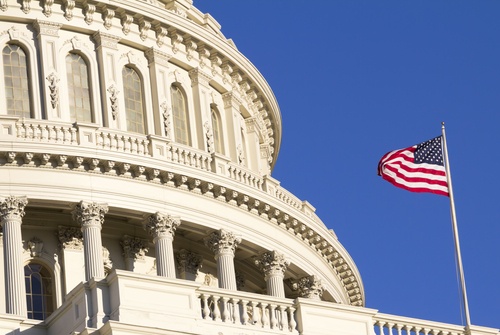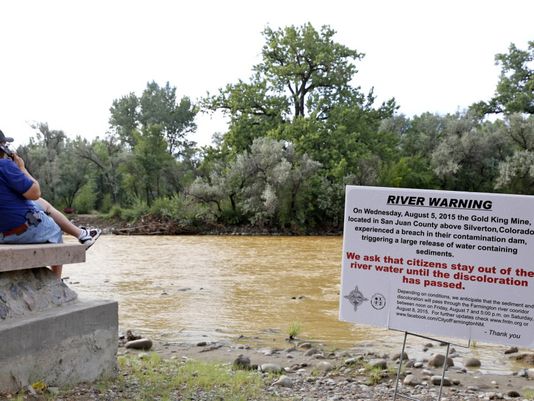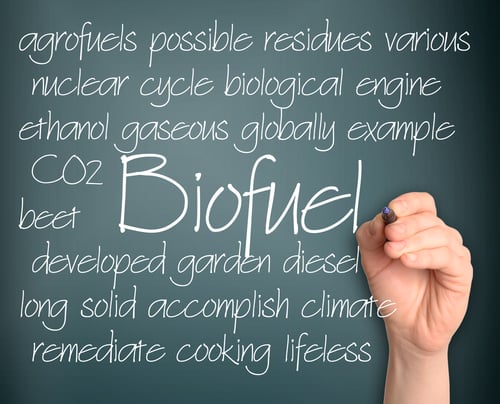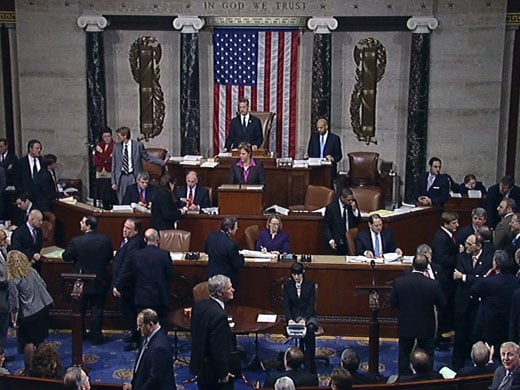Yesterday (November 30th) the EPA finalized renewable volume obligations for the RFS for 2018 and the RVO levels for 2019.
ESG & Industry Updates
EPA Finalizes 2018 RFS Volume,Declines Obligated Party Change Proposal
Posted by Ed Burke on Dec 1, 2017 5:22:05 PM
Topics: EPA Mandate, RINs, Biofuels, Cellulosic Ethanol, EPA, RFS
Clean Power Plan Rollback - Serious Issue or Symbolism?
Posted by Ed Burke on May 31, 2017 10:25:38 AM
This March, President Trump signed an executive order to potentially roll back the Clean Power Plan, as part of a broader order regarding Energy Production & Independence in the US. The order directs the EPA to review the ruling and make a determination on whether to "rescind, repeal, or revise".
Topics: EPA, clean power plan
2015 was a banner year for Renewables. The EPA finally finalized RFS volumes for 2014-2016 in November. In December, Congress passed the tax extenders package which included both the $1 per gallon biodiesel blender credit and cellulosic blending credit of $1.01 per gallon, retroactively.
Topics: Biodiesel, EPA, renewable energy
Senate Strikes Down Clean Power Provisions Ahead Climate Change Summit
Posted by Ed Burke on Nov 18, 2015 4:24:41 PM
Topics: EPA, Climate Change, obama, clean power plan
Ahead of the Climate Change Summit, Here's Where We Are on Regulations
Posted by Ed Burke on Nov 16, 2015 2:39:21 PM
Despite the horrific ISIS terrorist attacks in Paris this past weekend and the fact that France will still officially be in a State of Emergency, as declared by French President Hollande, the Global Climate Change Council Meeting is still slated to take place in Paris on November 20th.
Topics: EPA, Climate Change
EPA Spill Highlights Difficulty of Mine Decontamination
Posted by Ed Burke on Aug 12, 2015 1:31:32 PM
Topics: EPA, emergency response
Obama, EPA Announce First-Ever Federal Limits on Power Plant Emissions
Posted by Ed Burke on Aug 6, 2015 2:16:38 PM
Topics: natural gas, EPA, Carbon Emissions, clean air act, power plant emissions, coal, obama
In November the EPA announed it would not be able to finalize on the RFS volumes for biofuels until 2015. The 2014 and 2015 volumes will be set soon,, in theory. But there has been a lot of stress out there in the industry over the fact that the delay will essentially mean refiners and producers need to be retroactively compliant with the volumes the EPA sets.
The biofuels industry is pushing for an increase in biofuel requirements, to 18.15 billion gallons. This is probably not happening, but the uncertainty overall has had a serious impact on bio producers, many of whom have scaled operations way back over 2014 as compared to 2013.
Topics: Biodiesel, EPA Mandate, EPA, RFS
Midterms 2014: What Will the Energy Agenda Look Like Now?
Posted by Ed Burke on Nov 6, 2014 8:00:00 AM
Topics: US Crude Exports, EPA, Keystone XL, Carbon Emissions, Election Results
We talked before about the White House's proposed new regulations on Methane emissions, which came on the heels of the Administration supporting increased natural gas exports in response to the Russia/Ukraine debacle. Well the EPA whitepapers have come out now outlining proposed changes on each of the industries involved - you can check those out here: EPA Methane Whitepapers
The Admin proposed changes cite the Agricultural sector as the largest methane producer, followed by Nat Gas. The difference however, is changes proposed for Agriculture are "voluntary" versus regulatory changes for the Nat Gas sector. As usual, environmental groups cheered and said too little too late, while the industry said given it's in their financial best interest to control leakage (their main source of environmental methane), new regulations are an uneccessary burden.
As we said before, it's hard not to infer from the timing that increasing regulations on methane is at least in part due to environmental and consumer backlash on exports over environmental and supply/pricing concerns. However, given that exporting should increase revenue greatly for the industry it's a pretty savvy time to introduce regulations that may be costly.
On the consumer side, news has been breaking recently on the number of gas leaks in communities. In the wake of several explosions, there has been some digging into just how big a problem neighborhood leaks may be, and the news is not good. Some estimates (including a Boston University Study) peg the number of neighborhood leaks in the City of Boston alone at over 3400, and over 20,000 statewide. (You can read the Boston Globe article on the BU Study here: "Boston Riddled with Mostly Small Natural Gas Leaks" )
The issue with these leaks goes beyond the obvious safety and environmental concerns as well. Gas that escapes en route to the consumer is paid for by the consumer. Its estimated that Massachusetts ratepayers are paying an average of $39 million dollars a year for leaked gas ($640 million-1.5 Billion from 2000-2011 according to a study by Senator Ed Markey's Office)
Topics: natural gas, EPA, methane, gas leaks
Subscribe to Email Updates
Recent Posts
Posts by Topic
- Carbon Emissions (42)
- Climate Change (32)
- renewable energy (31)
- Oil & Energy Magazine (27)
- EPA (24)
- Massachusetts (21)
- Biden Administration (18)
- decarbonization (15)
- Biodiesel (12)
- natural gas (12)
- EPA Mandate (11)
- RFS (11)
- Solar (11)
- Biofuels (10)
- Keystone XL (10)
- methane (10)
- Clean Energy (9)
- offshore wind (9)
- Energy Independence (8)
- Energy Infrastructure (8)
- Safety (8)
- Biodiesel Tax Credit (7)
- Emissions (7)
- Ethanol (7)
- ev (7)
- Cellulosic Ethanol (6)
- EV Charger (6)
- RINs (6)
- Trump Administration (6)
- environmental justice (6)
- Fracking (5)
- Inflation Reduction Act (5)
- Technology (5)
- US Crude Exports (5)
- Utility Rates (5)
- electric vehicles (5)
- maine (5)
- tesla (5)
- ACT (4)
- Mass DOER (4)
- TransCanada (4)
- battery (4)
- fuel management (4)
- massachusetts biodiesel mandate (4)
- obama (4)
- paris accord (4)
- remote tank monitoring (4)
- CARB (3)
- CRUDE (3)
- Carbon Capture (3)
- Clean Fuel Production Credit (3)
- E85 (3)
- Emergency Fuel (3)
- Massachusetts Clean Cities (3)
- Waste Feedstock Biodiesel (3)
- china (3)
- clean power plan (3)
- electricity rates (3)
- net-zero (3)
- renewable diesel (3)
- solid state battery (3)
- AI (2)
- AVs (2)
- Bioheat (2)
- Commodities (2)
- Congress (2)
- Customer Service (2)
- DOT (2)
- EIA (2)
- Emergency Generator Program (2)
- HFCs (2)
- Hurricane Sandy (2)
- IMO 2020 (2)
- MIT (2)
- Marinas (2)
- New York (2)
- Refinery Closures (2)
- Safe Driving Policy (2)
- TCI (2)
- US Energy Boom (2)
- ZEV (2)
- autonomous vehicles (2)
- clean air act (2)
- coal (2)
- driver shortage (2)
- emergency response (2)
- environment (2)
- ferc (2)
- geothermal (2)
- hydro-electric (2)
- hydrogen (2)
- national grid (2)
- net metering (2)
- power plant emissions (2)
- power plants (2)
- railcar regulations (2)
- tariff (2)
- vineyard wind (2)
- API (1)
- Air conditioning (1)
- Baiji Refinery (1)
- Blend Wall (1)
- Brent Crude (1)
- Brent vs WTI (1)
- CFCs (1)
- Cell Phone Policy (1)
- Clean Water Act (1)
- DEF (1)
- Election Results (1)
- Electrical Grid (1)
- Energy Efficiency (1)
- Environmental Impact Study (1)
- Environmentally Friendly Products (1)
- Ethanol Tax Credit (1)
- FEMA (1)
- Fiscal Cliff (1)
- Gas Tax (1)
- Gasoline Supply Crunch (1)
- HDVC (1)
- Hazmat (1)
- Heat Tax (1)
- Highway Trust Fund (1)
- Holyoke (1)
- Hybrid (1)
- ISIS (1)
- Iraq (1)
- Kigali Amendment (1)
- MOC (1)
- Market analysis (1)
- Mayflower (1)
- Montreal Protocol (1)
- NORA (1)
- Natural Gas Pipeline Explosion (1)
- New Jersey (1)
- Oil Barrel Tax (1)
- PFC (1)
- Pegasus Pipeline (1)
- Propane Autogas (1)
- Stimulus (1)
- Syria (1)
- Tank Truck Safety Training (1)
- Tax Increases (1)
- Tier 3 Gasoline Standard (1)
- Times Square (1)
- VEEP (1)
- Workplace Risk (1)
- agriculture (1)
- algonquin pipeline (1)
- alternative energy (1)
- altwheels (1)
- astm (1)
- bionic leaf (1)
- bitcoin (1)
- boston (1)
- clean heat standard (1)
- covid-19 (1)
- energy storage (1)
- eversource (1)
- export ban (1)
- fixed pricing (1)
- fuel (1)
- fuel efficiency (1)
- fuel marketers news (1)
- gas leaks (1)
- heating oil (1)
- hurricane harvey (1)
- inflation (1)
- irving oil (1)
- marketing (1)
- nuclear (1)
- online fuel buying (1)
- ozone (1)
- photovoltaic (1)
- pilot program (1)
- pipeline (1)
- propane (1)
- renewable natural gas (1)
- rggi (1)
- russia (1)
- sanctions (1)
- senate (1)
- shale (1)
- social media (1)
- social media for business (1)
- space (1)
- tablets (1)
- tennessee pipeline (1)
- ukraine, (1)
- value added services (1)







